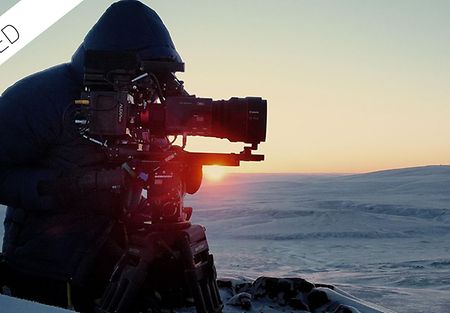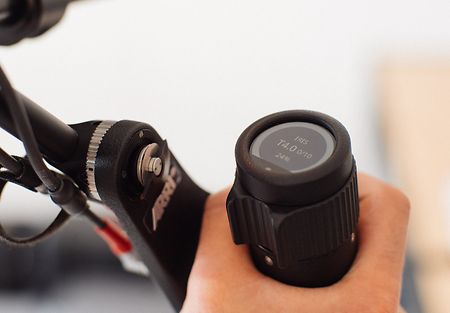With “Benedetta” by Paul Verhoeven and “La Fracture” (English title: “The Divide”) by Catherine Corsini, cinematographer Jeanne Lapoirie AFC authors the photography of two remarkable films screening in the Official Selection at the Cannes Film Festival 2021. She talks about her work on these two feature films, shot handheld with the ARRI ALEXA Mini and ARRI Master Grips and partially lit with ARRI SkyPanels.
You have two films in the Official Selection at Cannes this year. How do you feel?
Very happy, of course! It’s great for the films, for Paul Verhoeven and Catherine Corsini. I have already been fortunate enough to have two feature films in competition at Cannes. This was the case in 2013 with the films “Michael Kohlhaas” by Arnaud des Pallières and “A Castle in Italy” by Valeria Bruni-Tedeschi. So this distinction is always an important moment for the films and me.

“I didn’t want to make a period film with faded colors,” says DP Jeanne Lapoirie of “Benedetta.”
What were Paul Verhoeven’s wishes for the cinematography of “Benedetta”?
During our first meeting, he talked to me about technique. I didn’t expect that at all, for it is something quite rare. At the first meeting, we discussed the world of the film, the point of view of the mise-en-scène. Paul wanted to shoot with two handheld cameras. As the film takes place in a convent, he didn’t want too much movement. Then he addressed the question of light. He didn’t want it to be lit only by candlelight like in “Barry Lyndon.” I reassured him on this point.
On the set, we quickly got along very well. I think he was happy with my work and was even surprised by my use of natural light. I’m thinking in particular of the scenes in the church, where we sometimes managed to match the entry of the sun through the stained-glass windows of the chancel. Paul Verhoeven gives a lot of freedom to all the lead crew and his actors. Once he has chosen you, he trusts you. And the artistic choices are also part of your job. That’s pretty remarkable.
How did you prepare this period film, which takes place in the 16th century?
I intensely reviewed all of Paul Verhoeven’s films. I needed that background to prepare for my work on “Benedetta” and to understand the director’s cinema well. During the location scouting, we also talked a lot. I made proposals, and I watched how he reacted. Afterward, I did what I like in terms of image: a contrasting image, quite colorful. I didn’t want to make a period film with faded colors. I wanted an image that had character and power. Paul does not seek realism in his cinema. He’s not obsessed with that. What interests him most is the approach. It has to be punchy. It can be funny and disturbing at the same time. He also has a vision of women that is unique in cinema; he is a great feminist filmmaker. That’s what’s interesting about him. After all, we must not forget that Paul Verhoeven has been shooting in Hollywood for a long time. He is someone who makes cinema for a wide audience.

Lapoirie chose the ARRI ALEXA Mini for her work on “Benedetta.”
What camera system did you choose for “Benedetta”?
As usual, I used ALEXA Mini and Optimo zooms from Angénieux. I always shoot with the same equipment. I have tried other cameras, but there is always something that doesn't work for me. It was the same when I was working with 35 mm. No matter how much I tried Fuji, I always came back to Kodak film. That’s how it is. Today, I can’t shoot with anything other than the ALEXA. It’s the camera that looks the most organic, the closest to film. I also like the texture of the image and the way it desaturates in the highlights. There is still room for improvement with the Mini’s viewfinder. I prefer the classic ALEXA’s version of this feature. I use the viewfinder a lot because I set the aperture myself in the eyepiece thanks to the Master Grips, hence the importance of having a good viewfinder. It’s an important criterion for me—the same thing with the zoom. I avoid prime lenses. I like to look for my frame, change the value of the shot in the moment, to have something more fluid. I mount the ALEXA Mini on an Easyrig and use ARRI Master Grips. This allows me to control the zoom and aperture during the shot. They are a great tool; since I discovered these grips, I can't do without them.
How did you manage the multi-camera shoot?
Paul Verhoeven cuts his scenes a lot. I had the two ALEXA Minis on the same axis with different frames. I’m used to shooting with two cameras. It was already the case with André Téchiné on “Les roseaux sauvages” and “Les Voleurs.” In 35 mm, it was almost a performance at the time. It’s easier with digital today. I also usually shoot with two cameras on all Robin Campillo’s films. On “120 Beats per Minute,” the lecture hall scenes are even shot with three cameras, but most of the time, there are two cameras in shot reverse shot, whereas, on “Benedetta,” it was two cameras on the same axis.

The final pyre scene was shot with four ALEXA Minis and lit with ARRI SkyPanels.
What was the most complex scene to film on “Benedetta”?
It is the final scene of the pyre, which takes place in the open air, on the village square, with many extras. The shooting lasted five days. I was working with four ALEXA Mini cameras. Paul deemed that he didn’t have enough shooting days and therefore asked for two extra cameras. What made it complicated was that we had to manage shooting this sequence in the middle of summer, in Italy, with a very harsh sun on one side of the square in the morning and on the other side in the afternoon. The lighting matches were almost impossible, especially since Paul wanted to shoot the scenes in sequential order. I struggled quite a bit to try and create shadows in certain strategic places with large canvases. I also negotiated with Paul for a better distribution during the day. But he didn’t mind the issues we had with sunlight matches. He didn’t hesitate to tell me with humor: “lighting matches are old-fashioned!”
What lighting did you use on this film?
For the pyre scene, I had a lot of ARRI SkyPanels. In the church, I lit the windows from the outside with 18K HMIs. Inside the convent, it was a mix of SkyPanel, SL1, Kinoflo, and China balls. On the exterior-night suicide scene, I also used small LED projectors mounted on a drone. There was no other way to bring light to the character perched on the roof. The fragile ground around the abbey would not have supported a lift boom.

The ALEXA Mini was also chosen for Lapoirie’s work on “La Fracture.”
Catherine Corsini’s “La Fracture” is a very different film from “Benedetta”?
Yes, “La Fracture” takes place over a single night in the emergency room of the Lariboisière hospital, where the character, played by Valeria Bruni-Tedeschi, comes for treatment. There she meets some “Gilets Jaunes” or “yellow vests” injured at a demonstration, including one played by Pio Marmaï. It’s a comedy and the fourth feature I’ve done with Catherine Corsini. She wanted to shoot the film fairly quickly, almost solely in a hospital setting. She wanted us to shoot handheld with a kind of urgency. She showed me a very beautiful photo report by Corentin Fohlen, taken at night in Lariboisière, with relatively dark lighting, few points of light, many areas of shadow and color in certain places. Something very different from what we are used to seeing in a hospital. This very much inspired me for the vision of the film. In fact, the image of “La Fracture” is very different from the previous films I’ve made together with Catherine: “Un amour impossible” and “La belle saison.”
How did you manage the light on such a set?
We wanted to avoid the cliché of the hospital being all white. I wanted an image with enough contrast, with several areas of shade. In the hospital, we installed a whole pre-light that could be controlled remotely from a tablet. We put SL1’s and Astera’s all over the ceiling. That way, they could appear in the picture. I also used SkyPanels as accent lights, either on stands or hanging. This allowed me to enhance a face but avoid an excessively harsh vertical light, especially in the consulting rooms.

Director Catherine Corsini wanted “La Fracture” to be shot “fairly quickly, almost solely in a hospital setting,” according to Lapoirie.
Were you also operating on “La Fracture”?
Yes, of course, and always with the ALEXA Mini, but this time in anamorphic, except for two exterior-night scenes, which I did in spherical. I also used Angénieux Optimo zooms and Master Grips. I shot long sequences, handheld, with a very mobile camera and a lot of frame changes in the shot. With each shot, the frame was different. It’s a very particular way of shooting. It’s the opposite of Verhoeven, where everything is significantly cut out and determined in advance. On “La Fracture,” I knew that Valeria Bruni-Tedeschi would be willing to work in this way. I have photographed almost all her films as a director. She is an actress who is constantly inventing, who likes to take a lot of freedom, dive into the scene, see it through to the end, and to make changes, if necessary, as the shooting unfolds.
What are your plans for the next few months?
At the moment, I am in the Pyrenees shooting “Pétaouchnock,” the film by Edouard Deluc, with Pio Marmaï. It’s a horseback ride of eleven characters in the mountains, with superb landscapes. On August 2, I’ll be working on Robin Campillo’s new feature film, “École de l’air,” and we will be working together again five years after “120 Battements par minute.” For these two films, I will still be working with the ALEXA Mini camera and Angenieux Optimo lenses.
Opening image + images 2, 3, 4: © Adrien Grasswill
Images 5, 6: © Carole Berhuel



